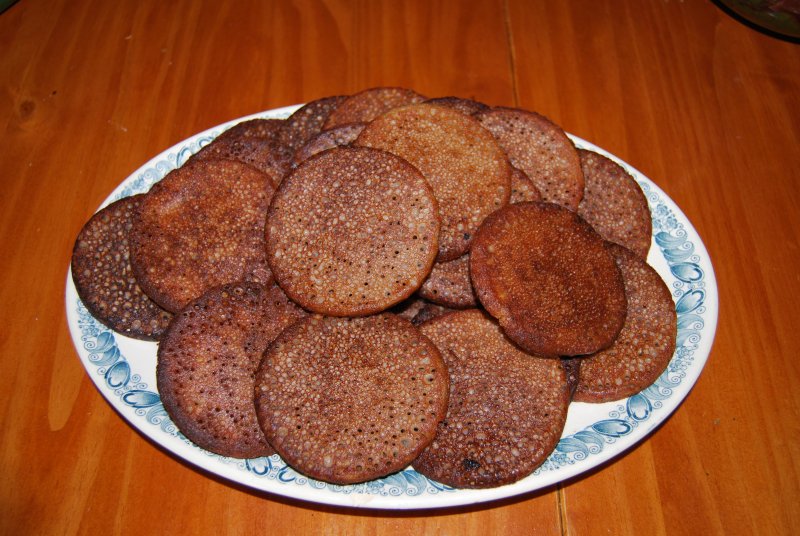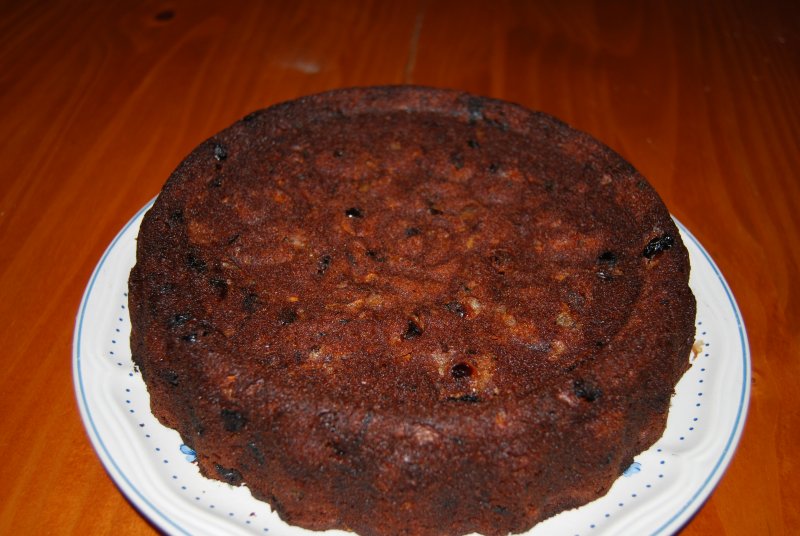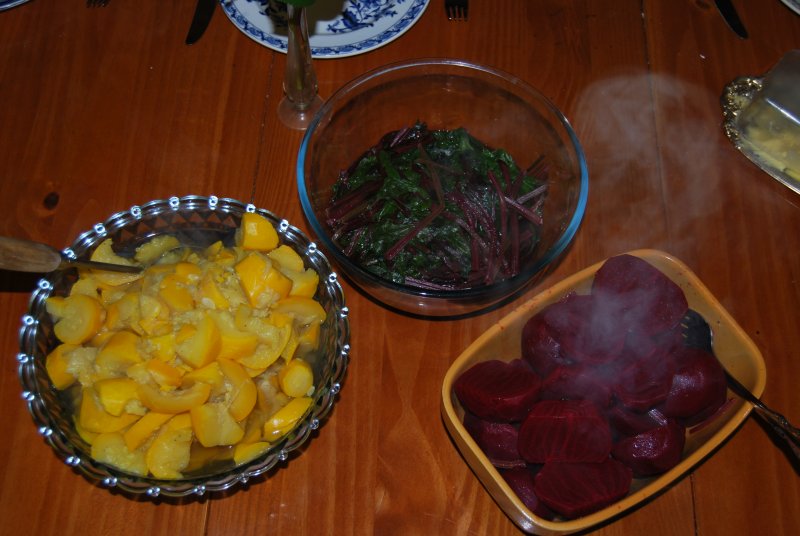Heimdallr said:
Have you guys tried making a biscuit recipe from the buckwheat? I'd love try some biscuits and gravy with the bison sausage we get here. Would the muffin recipe suffice for that? Sorry I'm a bit ignorant when it comes to cooking different kinds of breads.
broken.english said:
Stevie's muffin recipe might be ok but it is based on sourdough. If you don't have sourdough, the closest thing to a biscuit I can think of is a pan bread. One recipe that could work for you is the one of Trevrizent in Gluten-free recipes, page 5, post #69, second recipe. You could bake it without lid.
Interestingly, I’ve just had a first go at making a ‘biscuit’. I was looking for a replacement for a commercial brand of buckwheat crispbread – supplies seem to have terminated around here, and there is no access to the manufacturer’s website,which is an other than good sign – the buckwheat crispbreads are useful for eating when walking in the mountains – they come in several packets of five in the box, each packet is useful for an afternoon snack or for lunch. The ingredients quoted on the box are: wholemeal buckwheat flour (96.6%), whole cane sugar (2%), sea salt, (1.5%).
I came across an old English recipe for Mereworth biscuits, a light flaky plain biscuit – this was the closest I could get, they are meant to puff up – 250g plain flour, 30g butter, a pinch of salt and some hot milk to make a soft but firm dough. Looking at other biscuit recipes, this seemed rather light on butter, and would need something added to puff up a gluten-free flour.
For my first attempt I used the following recipe:
250g buckwheat flour
120g butter
1/4tsp salt
1tsp Xylitol
1tsp baking powder
warm goat’s milk (2tbsp used)
I mixed all the dry ingredients in all a large plastic bag and shook them up before putting them in a bowl. The butter was then rubbed in, and finally the warm milk added. A ‘dough’ was produced that was firm but soft, slightly wetter than pastry.
The dough was rolled out between two sheets of parchment paper (to stop the dough sticking to the board and rolling pin, and it aids transport to the baking sheet). I rolled the dough out to approximately 1/8 thick, and cut the dough into rounds (it made about 30).
In a pre-heated oven (220C, 425F, Gas Mk 7) the dough rounds were placed on greased baking trays and baked for 5-8 minutes until slightly browned. They were then cooled and stored in an airtight container. There was a lack of evidence of ‘puffed up’! It was a biscuit (fragile) rather than a crispbread, or wafer.
The next attempt (I didn’t want to go on to an egg mixture just yet, as that would be too much like pastry), was based around an Anzac biscuit recipe, and used to modify the first recipe. This recipe also gave the 'secret' of getting the mixture to foam up.
Recipe 2:
250g buckwheat flour
1/4tsp salt
120g butter
1 1/2tsp Xylitol
1/2tsp bicarbonate of soda
hot water (2tbsp) plus 125ml (1/2Cup)
The first two ingredients were mixed together in a large plastic bag, before placing in a large mixing bowl.
The butter was melted in a pan over a low heat with the 1 1/2tsp Xylitol.
The bicarbonate of soda was placed in a separate bowl and the 2tbsp boiling water poured over it. This mixture was then stirred into the melted butter so that it foamed up.
The resultant wet mix was then poured into the dry ingredients, and finally mixed to produce a wet dough using the rest of the 125ml of hot water (more could be used to get the ‘dough’ to pour).
The wet dough was spooned onto two greased baking sheets (8in x 12in), roughly smoothed, and transferred to a pre-heated oven (150C, 300F,Gas Mk 2) and baked for 20-25mins. After 10 minutes, the ‘dough’ was scored into rectangles (16 in each tray), before baking was resumed.
The biscuits were taken out of the oven, left for 5 minutes before transferring to a wire rack to fully cool. Store in an airtight container.
Still a biscuit, and softer, yet lots easier to make. For a first time biscuit maker there is more work to do!




